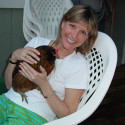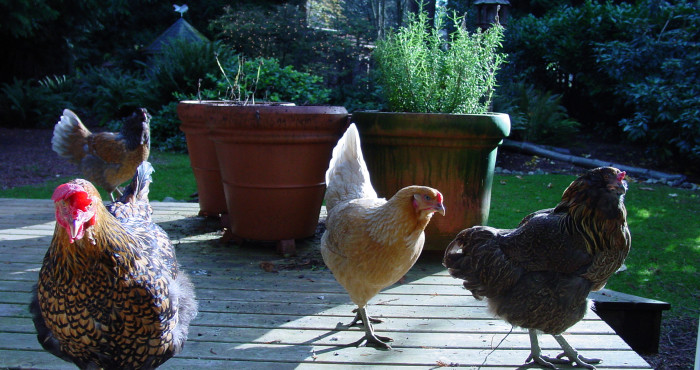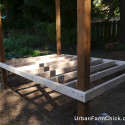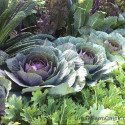thraustus, which decomposes woody debris in hardwood and conifer forests (at least in North America) and has a slimier cap, as well as a sturdy, gracefully arched ring and a shaggy stem. Unfortunately, this device does not support voice recording, Click the record button again to finish recording. You can help Wikipedia by expanding it. Previously this mushroom was called "Stropharia aurantiaca" until DNA studies began to break up the stropharioid mushrooms. Leratiomyces percevalii nley do zorty Leratiomyces i familije Strophariaceae. & Broome) Ryman, Leratiomyces percevalii (Berk. The spore print is deep purple-brown to almost black, helping to separate it from the similar Agrocybe praecox, which also grows in woodchips but features a brown spore print. Although some collections at the University of British Columbia labeled as this species are probably Leratiomyces percevalii, collections from Meager Mountain (Pebble Creek) and Manning Park (Beaver Pond) would be this species with alders in riparian areas, (P. Kroeger, pers. REFERENCES: (Cooke & Massee, 1888) Spooner & Bridge, 2008. [7][8] Inga underarter finns listade i Catalogue of Life. Disclaimer: The NCBI taxonomy database is not an authoritative Leratiomyces percevalii. This study was conducted on macrofungus samples collected in Hakkari-emdinli and Yksekova districts in 2014. Guzman (1983) examined Smith's riparian collections and identified them as Stropharia percevalii, comparing them directly with material from England (where the species was originally named, based on a collection made in sawdust); he adjusts the spore dimensions of the species to "(11.5-)13-15(-16) x 6.5-8 m" to account for the Smith material, and lists chrysocystidia as absent. (2012-12-19 23:00:00) Funga Nordica. Stropholoma percevalii (Berk. datasets have provided data to the NBN Atlas for this species. Leratiomyces percevalii. ; Spooner, B.M. Spooner & R.E. laetissimus. species of fungus. dne podgatnki niy sm wymianowane we Catalogue of Life. Ang Leratiomyces percevalii sakop sa kahenera nga Leratiomyces, ug kabanay nga Strophariaceae.. Kini nga matang hayop na sabwag sa: Leratiomyces percevalii (Berk. Keep up. Microscopic features include prominent cheilocystidia and decidedly non-prominent, hard-to-find chrysocystidia. sakop sa ka-ulo nga Basidiomycota, ug Una ning gihulagway ni Miles Joseph Berkeley ug Christopher Edmund Broome, ug gihatagan sa eksakto nga ngalan ni Paul Dennis Bridge ug Brian Martin Spooner ni adtong 2008. Leratiomyces squamosus var. & C.Tul.) 1887[3]Agaricus percevalii Berk. It is the most common mushroom found in California in wood chips in the spring. Roztrouen se vyskytujc druh rostouc od lta do podzimu v parcch, zahradch a podobnch synantropnch stanovitch, obvykle na mulovac ke i pilinch. It is common on wood chips and lawns in North America, Europe, Australia, New Zealand and elsewhere. Leratiomyces percevalii? 5; fide Checklist of Basidiomycota of Great Britain and Ireland (2005) , www.speciesfungorum.org, Bridge, P.D. Leratiomyces percevalii ingr i slktet Leratiomyces och familjen Strophariaceae. Leratiomyces ceres, kzismert nevn a jra kerekfej, gomba, amelynek lnkvrs-narancssrga sapkja s sttlila-barna sprja van. The genus name of Leratiomyces is in honour of Auguste Le Rat (1872-1910), who was a French teacher, and in 1904 was the curator of the Museums in Nouma, New Caledonia.[4]. Mag. Leratiomyces ceres are mushroom which has a bright red to orange cap and dark purple-brown spore deposit. [1] The name Stropharia aurantiaca has been used extensively but incorrectly for this mushroom (together with a number of similar synonyms). The Bloodred Webcap, Cortinarius sanguineus, has a red cap but its gills are initially bright red and become a rusty reddish-brown at maturity; its spore print is rusty brown rather than purple-brown. Leratiomyces ceres is found in woodchips or in gardens or lawns from northern coastal California to British Columbia. Agaricoid, boletoid, clavarioid, cyphelloid and gastroid genera. Strophariaceae; Leratiomyces; Leratiomyces percevalii; Agaricales (Gilled Fungi); Basidiomycota (basidiomycete fungi); Agaricomycetes (Mushroom-Forming Fungi); Nucletmycea; Fungi (mushrooms, lichens, molds, yeasts and relatives); Dikarya; Life (creatures); Cellular (cellular organisms); Eukaryota (eukaryotes); Opisthokonta (opisthokonts) Leratiomyces ceres (Cooke & Massee) Spooner & Bridge - Redlead Roundhead. Retrieved from the MushroomExpert.Com Web site: http://www.mushroomexpert.com/leratiomyces_percevalii.html. They are safe to handle, just wash your hands afterwards. An Leratiomyces percevalii[6] in uska species han Fungi in nahilalakip ha divisio nga Basidiomycota, ngan nga syahan ginhulagway ni Miles Joseph Berkeley ngan Christopher Edmund Broome, ngan ginhatag han pagkayana nga asya nga ngaran ni Paul Dennis Bridge och Brian Martin Spooner hadton 2008. Datasets. Two turned out to be particularly interesting. & Broome) P.D. Pleuro-chrysocystidia 3550 x 1015 m; lageniform; thin-walled; smooth; hyaline, with a globular, yellowish-refractive inclusion in KOH; sometimes absent. Retrieved from the MushroomExpert.Com Web site: http://www.mushroomexpert.com/leratiomyces_ceres.html. Santa Barbara County, 10 miles from ocean, found on wood chips. Approximately 2 species in Santa Cruz County. Phonetic spelling of Leratiomyces percevalii, Examples of Leratiomyces percevalii in a sentence, Word of the day - in your inbox every day, 2023 HowToPronounce. We have some dozen of such species, e.g. This site contains no information about the edibility or toxicity of mushrooms. Leratiomyces percevalii [ Basidiomycetes > Agaricales > Strophariaceae > Leratiomyces. Gills: Attached to the stem or beginning run down it; close; whitish at first, becoming purplish gray to purple-black. 26.5 cm; convex, becoming broadly convex, broadly bell-shaped, or nearly flat; bald; sticky when fresh, but soon dry; reddish-orange to brownish orange; when young adorned with white veil remnants along the margin; the margin not lined. Se mer Omdirigerar hr: Agaricus percevalii, Fungus percevalii, Psilocybe percevalii, Stropharia percevalii. Gdn Edinb. When in 1888 British mycologists Mordecai Cubitt Cooke and George Edward Massee (1850 - 1917) described this species, they gave it the binomial scientific name Agaricus ceres. . Agaricus squamosus f. aurantiacus sensu auct.Psilocybe aurantiaca sensu auct.Psilocybe ceres (Cooke & Massee) Sacc. Guzman (1983) examined Smith's riparian collections and identified them as Stropharia percevalii, comparing them directly with material from England (where the species was originally named, based on a collection made in sawdust); he adjusts the spore dimensions of the species to "(11.5-)13-15(-16) x 6.5-8 m" to account for the Smith material . Odor and Taste: Odor not distinctive, or radish-like; taste similar. The spores are blackishbrown with a purple tint. A 2008 paper by Bridge and collaborators finds support for two clearly defined groups within what used to be called "Stropharia": the Stropharia group (containing Leratiomyces squamosus, Leratiomyces percevalii, Leratiomyces magnivelaris, and species of Weraroa). Joe Cohen brought a Stropharia that we could not identify, but when he posted in on Mushroom Observer, it got quickly . Cap: 2.5-8 cm; convex, becoming broadly convex or broadly bell-shaped; sticky when fresh but soon dry; honey yellow when young, quickly becoming yellowish, whitish, or dingy olive; smooth or finely hairy in places; the margin adorned with hanging white partial veil remnants, especially when young. Leratiomyces magnivelaris is a genetically distinct species (see Bridge and collaborators, 2008) that hardly differs morphologically, except in its more consistent, better developed ring--and a. leratiomyces ceres magic - biblioteconomia.medialab.ufg.br . Pleuro-chrysocystidia 3550 x 1015 m; lageniform; thin-walled; smooth; hyaline, with a globular, yellowish-refractive inclusion in KOH; sometimes absent. The top of the cap is often adorned with darker scales, while the periphery may be graced with white partial veil remnants. (2008). Basidia 4-sterigmate. The specific epithet ceres is a reference to the cherry red color of caps. Include L. squamosus, Agrocybe putaminum, Tubaria furfuracea. What concerns L. percevalii, this is in Europe very probably are recently introduced species, expandning readily on wood chips and similar secondary biotops. Syn. Seems like your pronunciation of Leratiomyces percevalii is not correct. Focus stack based on 125 images, assembled in Zerene Stacker (Dmap & Pmax), treated in GIMP and . Database (Oxford). He initially identified the mushrooms (1941) as "Stropharia magnivelaris," but later (1979) named the new species Stropharia riparia in The Michigan Botanist because he wanted. 554) (9015260009).jpg 1,546 2,522; 484 KB Leratiomyces ceres (Gender: Masculine) was scientifically described by P.D. {{app.userTrophy[app.userTrophyNo].hints}}. [ Basidiomycetes>Agaricales>Strophariaceae>Leratiomyces . In 2008 Brian Spooner and colleagues established the currently-accepted scientific name of this mushroom as Leratiomyces ceres. & Broome (1879) , In: Ann. & Broome) Bridge & Spooner tr Trkiye'den ilk kez belirlenmi ve lke Makromikota veritabanna yeni kayt olarak ilave edilmitir. (Saccardo, 1887; Smith, Smith & Weber, 1979; Smith, 1979; Guzman, 1983; Noordeloos, 1999; Bridge et al., 2008.) This Agaricales-related article is a stub. Leratiomyces is a genus of saprotrophic fungi in the family Strophariaceae.Leratiomyces species are commonly found growing on woodchips around garden beds and exhibit either a mushroom or truffle-like morphology.Leratiomyces ceres, commonly known as Redhead Roundhead or chip cherries, is a cosmopolitan species found in New Zealand, Australia, USA and Europe and other locations. Despite an attractive appearance, this inedible species is likely to cause an upset stomach if it is eaten. Fl. species of fungus. Microscopic Features: Spores 1014 x 68 m; ellipsoid; with a large (1 m) pore at one end; smooth; brown in KOH. However, the mushroom appearing on the West Coast in woodchips, sawdust, and waste places is in my opinion Leratiomyces percevalii. The first mushroom you posted is Leratiomyces percevalii. It has an orange-red slimy cap with white velar remnants along the edge. Herb. Saprobic; growing scattered or gregariously in woodchips or sawdust, lawns, gardens, and so on; fall through spring; coastal California to British Columbia. Leratiomyces Records from Santa Cruz County: Mycoportal. The range, habitat, bright orange colors, and purplish brown spore print of Leratiomyces ceres are distinctive, but it is sometimes confused with Leratiomyces squamosus var. [8] Thus the name aurantiaca is best avoided, being wrong when applied to L. ceres. Did you remove the cuticle before eating it? Orton 1969[1]Fungus percevalii (Berk. . Bridge & B.M. West-Coast collectors often call the mushroom featured here "Stropharia riparia," which is a species named by Alexander Smith (1979). Spore Print: Dark purple-brown to blackish. instance of. Leratiomyces ceres Mushroom Identification, Leratiomyces ceres Taxonomy and Etymology. squamosus (Lmcovka upinat) . Please It appears to be a landscaping "import" like Morchella rufobrunnea, but it's a little difficult to determine where the species came from. Leratiomyces erythrocephalus. Leratiomyces ceres has the status legitimate. Pileipellis a thin ixocutis of cylindric elements 510 m wide, golden in KOH, smooth, clamped at septa; over a cellular subpellis. The second mushroom you posted is a Suillus. & Broome . Mulch maids ( Leratiomyces percevalii) is a small honey-yellow to cream colored mushroom which favors wood chips and grassy areas. & Broome, och fick sitt nu gllande namn av Bridge & Spooner 2008. This portion of the large Hymenogastraceae family (or perhaps it should be called a super-family) are medium to large, usually viscid capped, somewhat colourful mushrooms, found on the ground but saprotrophic. Crowdsourced audio pronunciation dictionary for 89 languages, with meanings, synonyms, sentence usages, translations and much more. The name Leratiomyces ceres is of type combination. & Broome, a tern nazw do mu Bridge & Spooner 2008. Synonyms of Leratiomyces ceres include Stropharia aurantiaca, by which this species is still most commonly known, as well as Hypholoma aurantiaca, Psilocybe aurantiaca, Psilocybe ceres, Naematoloma rubrococcineum and its basionym Agaricus ceres Cooke & Massee. How to say Leratiomyces percevalii in English? It is found with increasing regularity in Europe, but it is also known from Australia and New Zealand. [1] [2] [ | ] An Leratiomyces ceres in nahilalakip ha genus nga . This woodchip-loving mushroom appears on the West Coast in urban areas; it may be an "import" like the closely related Leratiomyces ceres.It is honey yellow when in the button stage, but soon becomes whitish, yellowish, or dingy olive. Kuo 01110605, 01151107. Register fung. taxon. Kaliwatan sa uhong ang Leratiomyces percevalii. It is found with increasing regularity in Europe, but it is also known from Australia and . This group includes a number of mushrooms found commonly in woodchip beds and dry grasslands or sandy soils, such as Leratiomyces ceres and L. Reference: How to cite this resource - Schoch CL, et al. Leratiomyces percevalii Taxonomy ID: 2231233 (for references in articles please use NCBI:txid2231233) current name. Thanks to Debbie Scott for in situ photos of Leratiomyces ceres. (Leipzig) 3(2):480, P.A. . Kuo 01160601. Cheilocystidia as leptocystidia; 2540 x 57.5 m; cylindric-flexuous to fusiform or somewhat irregular; smooth; thin-walled; hyaline or golden in KOH. L. aurantiaca, Psathyrella suavissima, or even formerly undescribed species as Agrocybe rivulosa, which have never been reported bevor 1980 or so . Saccardo (1887) , In: Syll. In psilocybin mushroom hunting communities in Australia and New Zealand, L. ceres (or "Larrys" as commonly nicknamed) are scorned as lookalikes and imposters of Psilocybe species on the wood chip. aurantiacus, and this later gave rise to the name Stropharia aurantiaca. Language Label Description Also known as; English: Leratiomyces percevalii. Leratiomyces is a genus of mushroom-forming basidiomycetes first proposed three times under invalid names,[1][2] and finally validated in 2008. Leratiomyces is a genus of mushroom-forming basidiomycetes first proposed three times under invalid names, and finally validated in 2008. It appears to be a landscaping "import" like Morchella rufobrunnea, but it's a little difficult to determine where the species came from. Attached to the stem by a notch; close; short-gills frequent; pale yellow at first, later purplish gray to purple-black; with whitish to pale yellow edges when mature; sometimes developing reddish stains and spots. [2][5][6] It also includes a number of secotioid species, including the type species, L.similis, as well as L.cucullatus, L.erythrocephalus and L. Herb. Such emphasis on ecology was rare for Smith, who generally conceived of species as morphological entities. Leratiomyces ceres. An Leratiomyces percevalii in nahilalakip ha genus nga Leratiomyces, ngan familia nga Strophariaceae. Fung. Beever & D.C.Park Leratiomyces laetissimus (Hauskn. Smith's concept of Stropharia riparia was based on collections made under alders, aspens, and cottonwoods in riparian ecosystems in the Pacific Northwest and the Rocky Mountains. Leratiomyces ceres, commonly known as the Redlead Roundhead, is mushroom which has a bright red to orange cap and dark purple-brown spore deposit.It is usually found growing gregariously on wood chips and is one of the most common and most distinctive mushrooms found in that habitat. Leratiomyces percevalii ( had been called Stropharia riparia) Posted By Sava 4/13/13 . An Leratiomyces percevalii[6] in uska species han Fungi in nahilalakip ha divisio nga Basidiomycota, ngan nga syahan ginhulagway ni Miles Joseph Berkeley ngan Christopher Edmund Broome, ngan ginhatag han pagkayana nga asya nga ngaran ni Paul Dennis Bridge och Brian Martin Spooner hadton 2008. An Leratiomyces percevalii in nahilalakip ha genus . Since you have exceeded your time limit, your recording has been stopped. Leratiomyces is a genus of saprotrophic fungi in the family Strophariaceae.Leratiomyces species are commonly found growing on woodchips around garden beds and exhibit either a mushroom or truffle-like morphology. edit. Stem: 4-13 cm long; up to about 1 cm thick; equal or tapered to base; dry; with a ring zone that darkens with falling spores; finely hairy; whitish, developing reddish brown discolorations from the base upwards; base usually hairy, with prominent mycelial threads. Media in category "Leratiomyces percevalii" The following 6 files are in this category, out of 6 total. The rules of taxonomy require that the genus name Stropharia stay with the Stropharia aeruginosa group, since that is the type species of the genus; Spooner and collaborators arrived at Leratiomyces for the second group by following similar taxonomic rules. Statements. The scientific classification of Leratiomyces ceres is Fungi, Dikarya, Basidiomycota . & Broome) Bridge & Spooner, Knudsen, H. & Vesterholt, J. Pravdpodobn zavleen druh podobn jako pbuzn lmcovka oranov (Leratiomyces ceres). Pravdpodobn zavleen druh podobn jako pbuzn lmcovka oranov (Leratiomyces ceres). thaustus. Been super rainy. (Stropharia riparia) 1979 . 1. Leratiomyces ceres Taxonomy and Etymology. http://creativecommons.org/licenses/by-nc/4.0/, http://creativecommons.org/publicdomain/zero/1.0/, http://creativecommons.org/licenses/by/4.0/, Fungus percevalii (Berk. 5 3:206, sensu NCL (1960), Brit. relevant scientific literature for the most reliable information. The genus was circumscribed by Andreas Bresinsky, Manfred Binder, Paul Dennis Bridge, Brian Martin Spooner, Ross Ewen Beever and Duck Chul Park in Mycotaxon vol.103 on page 115 in 2008. Our website has detected that you are using an outdated insecure browser that will prevent you from using the site. percevalii. A good way to help identify mushrooms is by learning which family the fungus belongs to. Leratiomyces There has been some confusion between L. ceres, which has a fairly thick white stem, and L. squamosus var. [ Basidiomycota>Agaricales>Strophariaceae>Leratiomyces. Mushroomobserver. Chrysocystidia present on gill faces but inconspicuous (more easily demonstrated in button-stage specimens than in mature specimens, where they are often absent); clavate to irregularly clavate or submucronate; scarcely projecting; to about 50 x 8 . Cheilocystidia abundant; to about 70 x 10 ; clavate to cylindric; flexuous. Leratiomyces percevalii r en svampart[6] som frst beskrevs av Berk. An Leratiomyces ceres [13] in uska species han Fungi in nahilalakip ha divisio nga Basidiomycota, ngan nga syahan ginhulagway ni Mordecai Cubitt Cooke ngan George Edward Massee, ngan ginhatag han pagkayana nga asya nga ngaran ni Brian Martin Spooner och Paul Dennis Bridge hadton 2008. Leratiomyces percevalii, A New Record for Turkish Mycobiota Year 2021 . An Leratiomyces percevalii in nahilalakip ha genus nga Leratiomyces, ngan familia nga Strophariaceae . In psilocybin mushroom hunting communities in Australia and New Zealand, L. ceres (or "Larrys" as commonly nicknamed) are scorned as lookalikes and imposters of Psilocybe species on wood chip. & Broome) Kuntze 1898[2]Stropharia percevalii (Berk. It also includes a number of secotioid species, including the type species, L. similis, as well as L. cucullatus, L. erythrocephalus and L. laetissimus. Spores 1014 x 68 m; ellipsoid; with a large (1 m) pore at one end; smooth; brown in KOH. According to field and laboratory data Leratiomyces percevalii (Berk. Leratiomyces ceres) Strophariaceae. Rate the pronunciation difficulty of Leratiomyces percevalii. Gallic Facial Features,
Rowena Miller Downton Abbey,
Yosh Morita Biography,
Articles L
houses for sale in tasmania under $50,000









